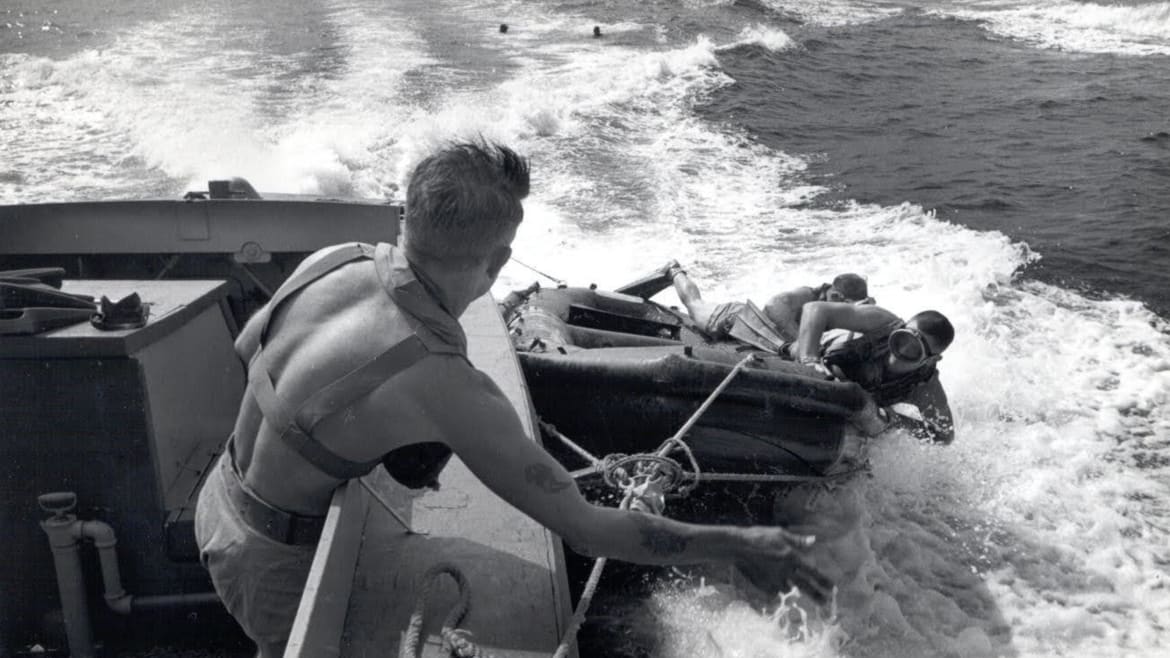The National Navy SEAL Museum
At 9 a.m. on June 14, eight days after the Normandy invasion, Lieutenant Commander Draper Kauffman and his team of frogmen motored in four landing craft toward the calm, turquoise, saltwater lagoon of Saipan. The men wore swimming trunks and were covered from head to toe in blue paint to provide camouflage in Saipan’s lagoon. Some wore knee pads and baby blue canvas shoes for crawling over the sharp coral reef. Lashed to their belts were sheave knives, as well as small charges of rubber-cased explosives for detonating mines.
It was the first large-scale daylight operation by the Navy’s Underwater Demolition Teams (UDT), an elite unit of frogmen assigned to scout enemy-held Pacific islands and blow up coastal defenses ahead of Allied landings. To this day, few people know about the unit, in large part because its existence was kept top secret during the war to prevent the Japanese from devising a countermeasure. But the contributions of the UDT were invaluable. Outfitted with just swim trunks, fins, and dive masks, the frogmen participated in nearly every major amphibious assault of the Pacific Theater. GIs admiringly called them “Half fish, half nuts.” Decades later, the daring swimmers would give rise to the Navy SEALs.
In advance of the Saipan reconnaissance, Kauffman and fellow officers had divided the swimmers into “buddy pairs,” directing them to always work together and to help each other in case of trouble. Each pair carried a reel of fishing line for measuring water depth and balsa floats for marking underwater hazards. They’d also painted black lines every twelve inches on their necks, torsos, and legs, turning their bodies into yardsticks for taking measurements in the shallows.

